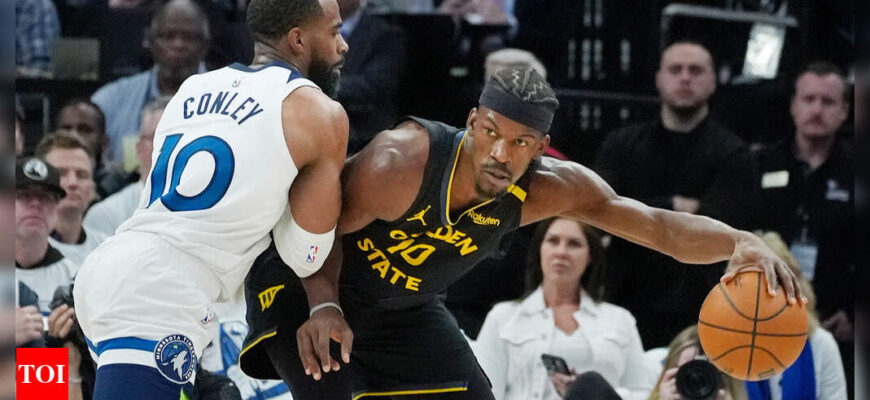The Golden State Warriors secured a crucial Game 1 victory against the Minnesota Timberwolves in their second-round series, gaining home-court advantage despite being the lower seed. However, this win was marred by a significant injury to star guard Stephen Curry. On Wednesday, Curry was diagnosed with a Grade 1 hamstring strain, an injury expected to sideline him for at least a week, meaning he will miss a minimum of the next three games. The Warriors now face the challenge of maintaining the momentum and shooting success seen in Game 1 without their key player.
This report examines how Golden State plans to manage Curry`s absence, particularly in Game 2, and assesses the timeline under which the team might desperately need him back on the court to advance to the conference finals for the first time since their 2022 championship win.
Game 1`s Unsustainable Shooting Performance
While the Warriors managed to extend their lead after Curry`s exit in Game 1, the statistical reality suggests their shooting advantage is unlikely to persist. Golden State shot an impressive 5-of-9 from beyond the arc in the pivotal third quarter without Curry, with key contributions from Buddy Hield and Draymond Green. Conversely, Minnesota continued its shooting woes from the previous series, hitting a dismal 5-of-29 (17%) from three-point range for the game. This 39-point differential from distance was crucial to the Warriors` victory.
However, historical data indicates that Game 1 shooting percentages have little correlation with those in subsequent games. Therefore, relying on such a significant shooting disparity is unrealistic for Game 2 and beyond, especially without Curry`s unparalleled threat. Adjusting for this difference strongly favors the Timberwolves in upcoming contests without Golden State`s star guard.
Adjusting to Life Without Curry
Golden State has historically struggled offensively when Stephen Curry is off the court; during the regular season, their lineups without him were in the bottom quartile for offensive efficiency. The mid-season acquisition of Jimmy Butler offers a potential lifeline. Butler provides much-needed playmaking and scoring, particularly through his ability to draw fouls.
Since the trade deadline, lineups featuring Butler but not Curry performed at a league-average offensive rating while boasting elite, 99th-percentile defense, leading to a significant net positive per 100 possessions. The primary challenge for coach Steve Kerr now is managing Butler`s workload, given his own recent pelvis contusion. Kerr will need to strategically rest Butler, which will inevitably leave the team without its primary offensive initiator. In Game 1, Kerr began staggering Butler`s minutes with Draymond Green.
Curry`s injury also necessitated deeper bench contributions; players like Jonathan Kuminga and Pat Spencer saw increased time and provided unexpected energy.
Minnesota Remains Series Favorite
Despite winning Game 1 on the road – a situation that would typically position them favorably – the Warriors are now viewed as underdogs due to Curry`s injury. Minnesota`s series odds have improved, reflecting an estimated 65% probability of advancing. Considering Curry`s absence and the historical tendency for teams to bounce back after losing Game 1 at home, the Timberwolves are significant favorites for Game 2 and are expected to be favored, albeit by smaller margins, when the series shifts to Golden State.
A key concern extends beyond the duration of Curry`s absence to his effectiveness upon returning. A rushed return could severely limit his mobility, as demonstrated by James Harden`s struggles after returning prematurely from a similar injury in the 2021 playoffs. Reinjury is also a risk.
Every win the Warriors can secure while Curry is out increases the likelihood that he can return closer to full health. Ultimately, Curry`s hamstring strain fundamentally alters the series dynamic and recontextualizes Golden State`s hard-fought Game 1 victory.







